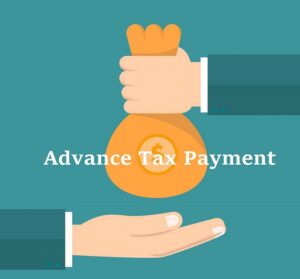 According to section 208 of the Income Tax Act, advance tax liability arises only if the estimated tax liability exceeds Rs10,000. Individuals must pay the Self Assessment Tax (SAT) on other sources of income.
According to section 208 of the Income Tax Act, advance tax liability arises only if the estimated tax liability exceeds Rs10,000. Individuals must pay the Self Assessment Tax (SAT) on other sources of income.
Advance Tax is a type of direct tax (income tax) that is paid in advance by an individual on their estimated total income for the fiscal year. It is also known as ‘pay-as-you-earn’ because it is paid before the end of a financial year. According to section 208 of the Income Tax Act, advance tax liability arises only if the estimated tax liability exceeds Rs10,000.
In case of failure in paying advance tax, a person will have to pay interest for non-payment of advance tax. Simple interest at 1% is charged under sections 234B and 234C on the amount of unpaid advance tax liability. A resident senior citizen is only required to pay advance tax if the person earns a living from a business or profession.
Individuals must pay the Self Assessment Tax (SAT) on other sources of income. It is the calculation of the individual’s final income tax liability after deducting TDS (Tax Deducted at Source) from their source of income as well as the advance tax payable for the fiscal year. If there is any tax pending before filing an individual’s income tax return at the end of the year, the final amount that the individual is liable for is calculated. This is known as the self-assessment tax.
Online Payment
– Access http://www.tin-nsdl.com > Services > e-payment
– Choose challan ITNS 280.
– Enter the necessary challan information (Please select Advance Tax check box)
– After entering all of your information, you will be directed to your bank’s net banking site.
– Login to your net banking portal and enter payment information at the bank’s website.
– Upon successful payment, a challan counterfoil with the CIN, payment details, and bank name will be displayed.
This challan serves as payment proof.
Offline/Papermode payment
– Take printout from https://incometaxindia.gov.in/forms/107010000000345598.pdf
– Enter the necessary challan information (Please select Advance Tax check box)
– Submit the challan with cash or a check to any bank branch that accepts income tax payments.
Advance tax is calculated by applying the applicable slab rate to the person’s total estimated income for the fiscal year.
– Login to the income tax website
– Click on “e-Pay taxes”
– It will redirect to the National Securities Depository Ltd, website.
– Select “challan no./ITNS 280” followed by “(0021) Income tax (other than companies)”.
– Fill the details like PAN card, name, contact details such as address, residential and official contact numbers and mobile numbers.
– Then choose the appropriate year for assessment that he or she will be making the payment for.
– Select the “type of payment”, which in this case will be “(300) Self Assessment Tax”.
– Choose the bank of choice from the dropdown menu to make the payment.
– Now enter the “tax payable amount”.
– It will redirect to the bank’s own Net banking page to make the payment.
Once the payment is made successfully a challan will be displayed. This will include CIN, all the payment details along with the bank’s name with which the payment has been made.
It is advisable to keep a scan or hard copy of the same.
Generally, after the SAT is paid, it reflects on the individual’s Form 26AS within a few days. If it does not show, the challan details can be filled in when filing the income tax return.
Source: https://www.hindustantimes.com/business/stepbystep-guide-to-pay-advance-self-assessment-taxes-101679151757085.html
© 2018 CA Chandan Agarwal. All rights reserved.